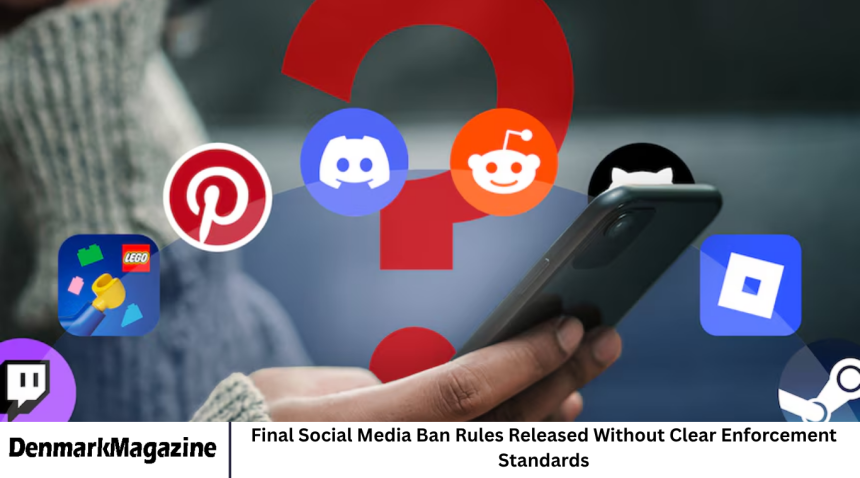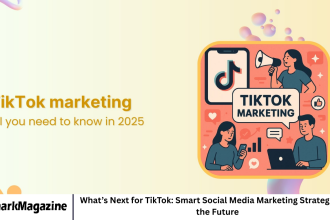The government has officially released the final set of rules governing the upcoming social media ban, but the announcement has sparked widespread debate and confusion. While the new regulations outline which platforms and content will be restricted, critics argue that they lack a clear, legally enforceable effectiveness standard. This gap, they say, leaves room for inconsistent enforcement, potential overreach, and uncertainty for both users and tech companies.
- The Background of the Social Media Ban
- What the Final Rules Include
- The Absence of an Effectiveness Standard
- Reactions from the Tech Industry
- Public Response and Free Speech Concerns
- Government’s Defense of the Policy
- Implications for Users and Digital Platforms
- Legal and International Ramifications
- The Path Forward
- Frequently Asked Questions
- Conclusion
The new policy is part of an ongoing effort to curb harmful online content, protect national interests, and ensure digital accountability. However, questions remain about how these goals can be achieved without infringing on free speech, privacy, and innovation.
The Background of the Social Media Ban
The idea of a social media ban has been under discussion for months, with officials expressing concerns about misinformation, online harassment, and foreign influence on domestic issues. Policymakers have argued that stricter regulations are necessary to protect citizens from harmful digital behavior and to ensure accountability from major tech platforms.
Earlier drafts of the proposed ban suggested strong measures, including mandatory content monitoring, penalties for non-compliance, and the ability for authorities to restrict access to certain apps. However, public backlash and pushback from tech companies led to revisions aimed at balancing safety with digital freedom.
The release of the final rules marks the government’s attempt to bring clarity, but many industry experts and civil rights advocates say the regulations still leave too many unanswered questions.
What the Final Rules Include
According to the newly published guidelines, the ban will primarily target platforms or content deemed harmful to public safety, national security, or social harmony. The rules grant the government authority to suspend, restrict, or block access to social media platforms that fail to comply with content moderation standards or data transparency requirements.
Additionally, companies must establish local compliance teams, respond to content takedown requests within a specified timeframe, and share reports on their moderation activities. The government has also reserved the right to impose financial penalties or revoke licenses for repeated violations.
While these measures aim to create accountability, they do not specify how compliance will be measured or what constitutes “effectiveness” in moderation. Without a legal benchmark, enforcement could vary widely depending on interpretation or political influence.
The Absence of an Effectiveness Standard
One of the most controversial aspects of the new policy is its lack of a clearly defined effectiveness standard — a legal measure that would set objective criteria for assessing compliance.
Without such a standard, it remains unclear how authorities will evaluate whether a social media platform has done enough to prevent harmful content or misinformation. Legal experts warn that this could lead to arbitrary decisions, inconsistent enforcement, and potential misuse of regulatory power.
Critics argue that a transparent effectiveness framework is essential for fairness. It would ensure that all platforms are judged equally and that enforcement actions are based on objective evidence rather than discretion. The absence of this framework, they say, undermines the rule of law and could expose the government to legal challenges.
Reactions from the Tech Industry
Tech companies have responded cautiously to the final announcement. Several firms expressed their willingness to comply with regulations but raised concerns about operational ambiguity and potential overreach.
Industry representatives noted that implementing moderation policies at scale is already complex and resource-intensive. Without clear enforcement criteria, companies may struggle to determine how much moderation is “enough” to avoid penalties.
A spokesperson for one major platform said, “We support regulations that protect users, but we need transparency and consistency. The lack of a measurable standard creates uncertainty for businesses trying to comply in good faith.”
Some smaller social media startups fear that the new rules could impose costs and legal risks that only large corporations can absorb, potentially stifling innovation and competition in the digital space.
Public Response and Free Speech Concerns
Civil liberties groups and digital rights advocates have voiced strong opposition to the new rules. They warn that without an enforceable standard, the regulations could be used to silence dissent, limit public discourse, or target specific voices under the pretext of moderation.
Free speech organizations argue that the broad wording of the ban leaves too much room for interpretation. Terms like “harmful content” or “threat to social harmony” are not clearly defined, creating a risk that legitimate criticism, journalism, or political discussion could be restricted.
There are also concerns that the ban could drive users toward unregulated or encrypted platforms, making it harder for authorities to monitor online activity effectively. Critics say that rather than fostering safety, poorly defined restrictions could push harmful content underground.
Government’s Defense of the Policy
In response to criticism, government officials maintain that the rules are a necessary step toward creating a safer digital environment. They argue that social media platforms have repeatedly failed to act responsibly, allowing harmful content to spread unchecked.
Officials insist that the new regulations are not meant to suppress free expression but to ensure accountability and protect public welfare. “These measures are about transparency, not censorship,” one spokesperson stated. “Our goal is to promote responsible online behavior and prevent misuse of digital platforms.”
The government has also hinted that it may refine enforcement mechanisms over time, suggesting that additional guidance or amendments could follow once the policy takes effect.
Implications for Users and Digital Platforms
For everyday users, the new rules could mean tighter restrictions on what can be posted or shared online. Platforms may become more cautious, removing content preemptively to avoid penalties. This could lead to a less open online environment, where expression is filtered through corporate or regulatory caution.
For platforms, compliance will likely involve increased monitoring, reporting, and legal coordination. Some may introduce stricter verification processes or automated moderation systems to detect potential violations. However, such systems have historically been prone to errors — sometimes flagging harmless content while missing genuinely harmful posts.
Smaller platforms and startups could face the greatest burden, as the cost of compliance may be too high. This could result in a market dominated by a few major players with the resources to adapt, reducing competition and diversity in the digital ecosystem.
Legal and International Ramifications
The absence of an effectiveness standard may also pose legal challenges domestically and internationally. Tech companies operating across multiple jurisdictions must balance compliance with local laws against global privacy and free speech commitments.
Legal analysts predict that the policy could face court challenges over issues such as due process, proportionality, and freedom of expression. Without clear metrics for enforcement, it may be difficult for the government to defend its decisions if they are perceived as arbitrary or politically motivated.
Additionally, international observers are watching closely. Similar regulatory debates are unfolding in other countries, and the outcome of this policy could influence global discussions on social media governance.
The Path Forward
While the release of the final rules marks a major milestone in digital regulation, the debate is far from over. The government has signaled openness to future revisions, and industry groups are expected to lobby for clearer enforcement criteria.
Experts suggest that the next step should involve establishing measurable effectiveness standards, such as content moderation success rates, response times, or transparency benchmarks. These would help create a more objective and legally defensible system.
Public consultation and collaboration between policymakers, tech companies, and civil society could also help ensure that regulations balance safety, innovation, and human rights. Without such cooperation, the policy risks deepening mistrust between regulators and the digital community.
Frequently Asked Questions
What are the new social media ban rules about?
The rules aim to regulate harmful content and ensure accountability among social media platforms, giving the government power to restrict or suspend non-compliant services.
Why is the lack of an effectiveness standard a problem?
Without clear criteria for measuring compliance, enforcement can be arbitrary and inconsistent, creating uncertainty for users and tech companies.
How will these rules affect regular users?
Users may see stricter moderation and reduced freedom to post certain content, as platforms will likely err on the side of caution to comply with regulations.
Can the policy be challenged in court?
Yes, legal experts believe the lack of measurable standards could open the door to constitutional or administrative challenges.
Are these rules permanent?
The government has indicated that the policy may evolve over time, with possible amendments and refinements as it is implemented and reviewed.
Conclusion
The final social media ban rules represent a significant shift in how governments seek to regulate the digital space. While the policy’s intent — promoting safety and accountability — is broadly supported, the absence of a legally enforceable effectiveness standard raises serious concerns.
Without clear guidelines, enforcement could become inconsistent, unpredictable, and vulnerable to abuse. For users, this may translate into reduced freedom of expression; for businesses, it means operational uncertainty.










